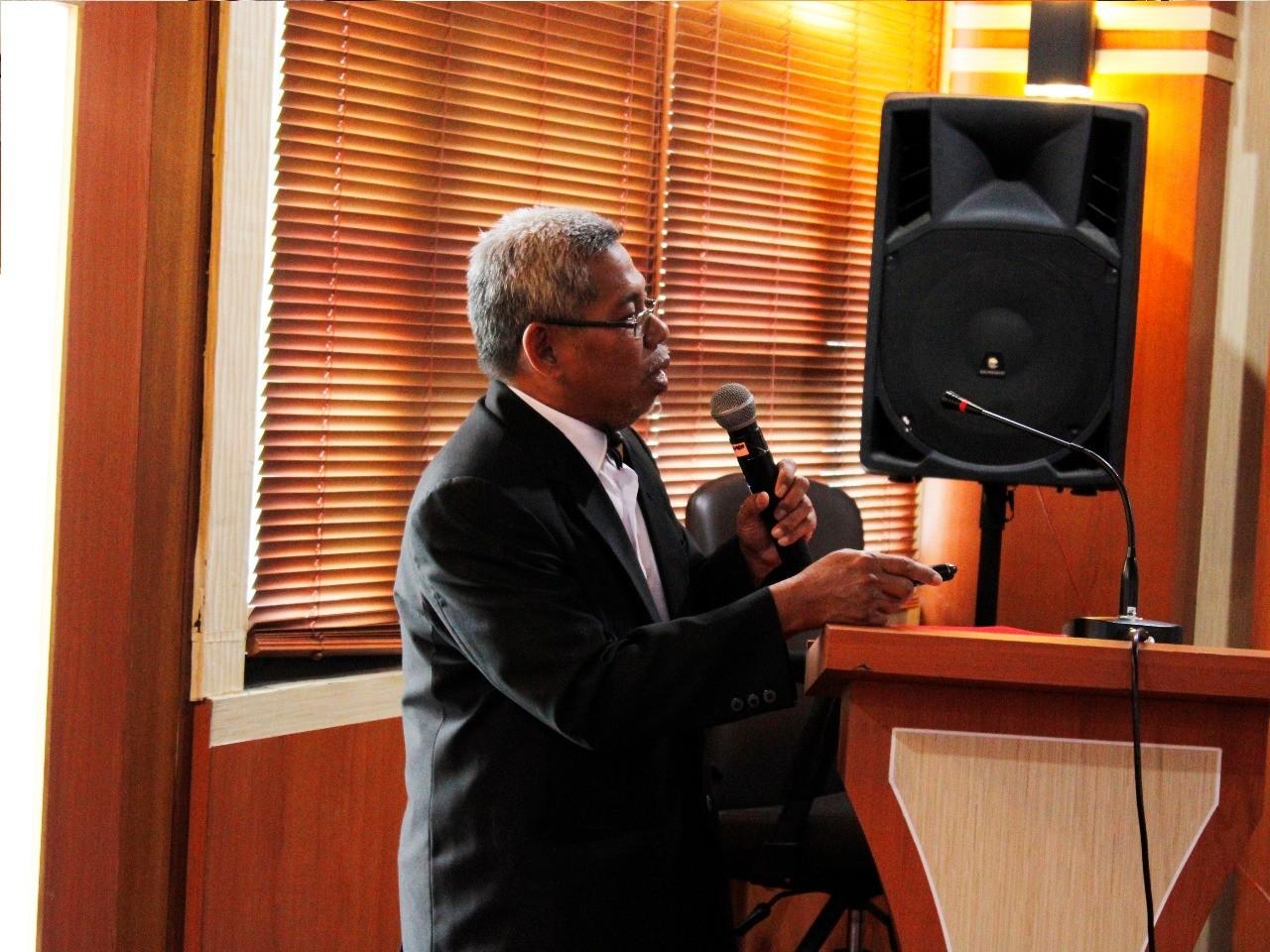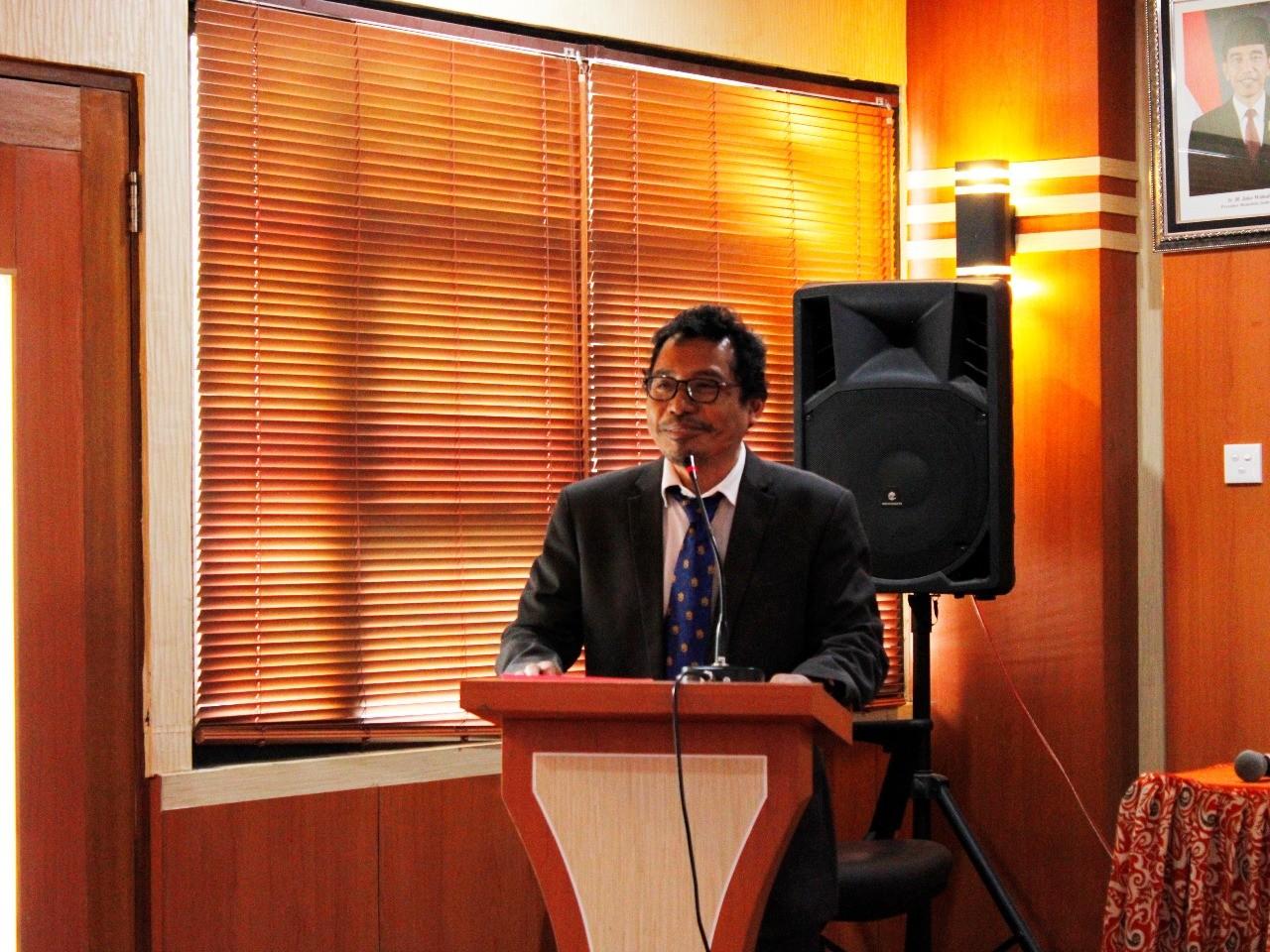Designing Renewable Energy with Manganese Dioxide, Achieve Doctorate at ITS

ITS Campus, ITS News – The depletion of energy reserves on earth requires people to innovate on creating alternative energy for their survival. Reflecting on this, Dr. Drs Mahmudi MSi in his dissertation examined the manganese dioxide (MnO2) nanoparticles as catalysts using the electrolysis method, to make batteries as alternative energy in the future.
In his presentation at the Open Session of Doctoral Promotion in the Chemical Engineering Department of Institut Teknologi Sepuluh Nopember (ITS), Wednesday (20/2), Mahmudi, researching with his promoter Prof. Dr. Ir Heru Setyawan MEng explained that the manganese was electrolyzed into a catalyst. Then the catalyst can be used to reduce oxygen to water.
According to Prof. Heru, the idea of creating this energy alternative is based on the phenomenon of the world’s conventional energy depletion and lack of access to energy in remote areas of Indonesia. This anxiety inspired him to be able to create batteries with catalysts that are easily found in Indonesia, but economically cheap. “Previously there had been a catalyst innovation with platinum active ingredients, but the price was expensive so they had to look for other active ingredients,” said the First Vice-Rector for Academic and Student Affairs of ITS.
The idea was then brought by Mahmudi who was also a lecturer at Malang State University (UM) for further research. With the dissertation title Synthesis of MnO2 Nanoparticles with Electrolysis Methods and their Application, it turns out this research did take a while. For approximately 13 semesters of his doctoral studies, Mahmudi continued to experience trial and error. “This long research period is due to the not yet maximum catalyst produced,” said the man born in Jombang, April 20, 1959.
The variable highlighted by Mahmudi to produce an effective and efficient catalyst is the degree of acidity (pH). By using a pH of 0.2 this battery produced a considerable amount of energy in a short time. “Before that, I also tested with a pH of 0.175 and the synthesis process took more than one day, and when using pH 0.2 it only took 15 minutes to produce the same amount of energy,” he said.
Mahmudi said that to get a pH of 0.2 wasn’t easy. In his journey, Mahmudi tried to use various nominal numbers and experienced trial-and-error. Although the results obtained were satisfactory, Mahmudi said that this research would continue to maximize the quality of the catalyst produced. (RAM / MIC / HUMAS ITS)

Related News
-
Achieving a GPA of 3.82, Septia Becomes the Best Graduate of the ITS Applied Bachelor’s Degree
ITS Campus, ITS News — Not only from the regular undergraduate (S1) program, but the applied undergraduate (D4) program at
February 25, 2019 14:02 -
Supporting the Development of Material Processes, ITS Professors Utilize Biomass Waste
ITS Campus, ITS News — Innovation in material processes continues to develop to support society’s need for environmentally friendly
February 25, 2019 14:02 -
ITS Professor Ideas for Bio-Corrosion Control in Marine Structures
ITS Campus, ITS News — Coastal and offshore buildings interacting directly with seawater trigger damage, including bio-corrosion. If not
February 25, 2019 14:02 -
ITS Launches the First Marine Floating Solar Power Plant Prototype in Indonesia
ITS Campus, ITS News — Institut Teknologi Sepuluh Nopember (ITS)‘s commitment in realizing the energy transition is getting serious.
February 25, 2019 14:02
